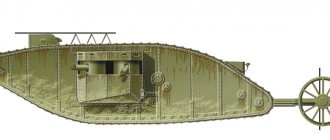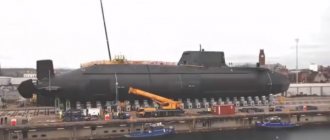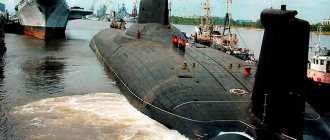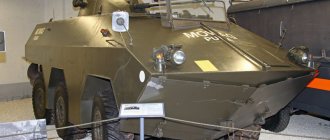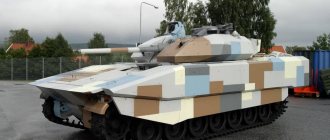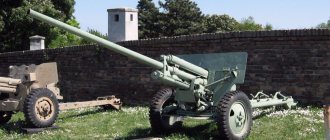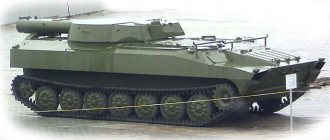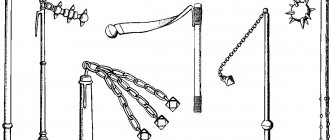From time immemorial, German industry has been famous for the highest quality of products. Especially when it comes to military products. It is known from history that even if German gunsmiths, in pursuit of technical perfection, overcomplicated the design without taking into account the characteristics of a particular theater of military operations, military acceptance did not have any questions for them.
It didn’t exist before... Now, as we see, they have appeared. Is it a matter of a decline in the general culture of production due to the erosion of the moral and ethical foundations of German society, or is it that in the years following the collapse of the Eastern Bloc, the Germans simply forgot how to defend themselves, falling into the insanity of North American paternalism? Perhaps both factors played a role. But, according to experts, even if the modern equipment of the German Bundeswehr is in perfect condition, it is still far from being comparable to American and Russian weapons.
"Puma": high security with excess weight
Let's take the same "Puma". It is similar in design to other infantry fighting vehicles, but has its own characteristics. The engine-transmission compartment, for example, is located at the front of the car and occupies approximately one-third of the length of its body. The driver is located in front on the left along the direction of the car, to the right of him is the engine partition of the power compartment.
An uninhabited turret with a weapon system is located in the central part of the vehicle body behind the gunner. It is slightly shifted to the left. Along the starboard side behind the BMP commander are 4 paratroopers. Two more fighters are along the left side of the vehicle immediately behind the turret. Total 6 people. There are no loopholes for firing from individual assault weapons.
© deutschesheer.de Puma infantry fighting vehicle.
There are three options for the Puma's armor protection. At a minimum, protection is provided against damage from bullets from large-caliber machine guns and large-caliber sniper rifles (caliber up to 14.5 mm) in all projections. In frontal projections, the Puma's armor protection must withstand hits from 30-mm shells from automatic cannons and grenades from hand-held anti-tank grenade launchers.
The armor protection of infantry fighting vehicles is enhanced by attaching special armor modules. In this case, the crew is protected from 30-mm sub-caliber projectiles from automatic cannons and grenades from hand-held anti-tank grenade launchers not only hitting the frontal but also the side projections of the vehicle.
The main weapon on the Puma infantry fighting vehicle is a 30-mm Rheinmetall Waffe Munition MK 30-2/AVM automatic cannon. The ammunition load includes armor-piercing sub-caliber and fragmentation shells with remote detonation. The secondary weapon is a 5.56mm MG4 machine gun.
Among the strengths of the Puma infantry fighting vehicle, it should be noted its high security (compared to other types of infantry fighting vehicles, and not vehicles of comparable mass), high efficiency indicators of firing from an automatic cannon, achieved through the use of weapon control systems and new ammunition, including including with remote detonation, high mobility, modern technologies of technical and logistical support, high command control.
The disadvantages include a large combat weight and the lack of mechanical backup systems to control the weapon system.
Observation and guidance devices
The Puma infantry fighting vehicle has stabilized main optics independent of the turret ( PERI, RTWL-B
) for the squad leader and tactical group commander. Particularly protected, stabilized optics for aiming weapons are provided to the gunner. Both systems, manufactured by Hensoldt Optronics, have a day vision channel, an ATTICA thermal imager and an LDM 38 laser rangefinder.
The periscope has four fields of view. In populated areas and at close range, the squad leader uses a field with a sector of 60°×45°. Three more fields of view with up to 16x magnification are available for observation, target identification and aiming. In addition to digital display, observation can be carried out through an optical channel with laser eye protection. Nd:YAG laser is used for distance determination. It takes measurements with an accuracy of 5 m at distances from 200 m to 40 km.
Images of the main optics using a CCD camera are displayed on two monitors for squad and tactical team leaders. The screen displays information about the day or night channel, the position of the tower, distance, aiming marks, navigation and system data. Thanks to digital signal processing, the entire surveillance and target designation complex is compatible with the network, and information can be transmitted to existing Bundeswehr combat control systems.
Workplaces for the gunner (left) and squad leader (right)
The weapon's optics, combined with the Puma's fire control system, allows the shooter to hit targets while moving. The gunner-operator also has a daytime CCD camera with a zoom lens and three fields of view. The driver's seat is additionally equipped with a night vision device and has a rear view camera screen.
Fire control system
The main weapon system allows the BMP commander or gunner to respond to enemy actions with appropriate weapons commensurate with the threat. A fire control system built on the “hunter-shooter” principle, which ensures the destruction of several targets in a very short time.
High reaction speed of the crew is achieved by equipping the commander's and gunner's combat positions with independent reconnaissance and weapon guidance equipment. This allows the commander (the "hunter") to discover new targets while the gunner (the "gunner") fires at a previously scouted enemy. A mark is placed on detected targets, and the weapon is aimed at them automatically. The fire is opened by the “shooter” by pressing a button.
According to the command of the Bundeswehr Ground Forces, the entire range of weapons of the Puma infantry fighting vehicle guarantees it a very high level of combat capabilities both in high-intensity conflicts and when operating in other operational conditions.
BMP-3: a special alloy with high-quality weapons
Now let's look at the Russian BMP-3, which the German Puma will most likely have to face on the battlefield.
When the designers were just developing this vehicle, they planned to install a 30 mm cannon on it. In principle, this caliber is enough to successfully cover most targets. Even in a confrontation with a tank, an infantry fighting vehicle armed with a 30-mm cannon could, if not win, then not lose: a successful salvo would demolish the attachments from the armored monster, depriving its crew of the ability to maneuver and aimed fire. However, the military demanded that the developers increase the firepower of the vehicle. As a result, one of the BMP-3 variants called “Vityaz” is equipped with a 100-mm gun - the 2A70 launcher, which is used both for firing high-explosive fragmentation shells and as a guide for armor-piercing active-rocket shells. It is paired with a 30 mm 2A72 automatic cannon and a 7.62 mm PKTM machine gun. There are two more machine guns in the vehicle's body.
© mil.ru
BMP-3.
In general, even at a quick glance we notice that the BMP-3 is better armed than the Puma BMP. For example, the Germans, as mentioned above, install 30-mm cannons on the Pumas, which are considered an auxiliary weapon on the BMP-3. Approximately the same situation arises with aiming and control systems. And if we imagine a fire duel between these two infantry vehicles, we will come to the conclusion that the BMP-3 has a great chance of winning.
It is worth noting the peculiarity of booking our “bampeshka”. A special alloy of steel and aluminum is used here. At the R&D stage, the military asked to install tank armor on the new vehicle. The engineers replied that then the BMP-3 would lose its buoyancy. As a result, it was decided to use a new alloy that provides the required level of protection, but does not burden the machine with excess weight. The disadvantage of this solution is that a body made of such an alloy is difficult to repair in combat conditions.
At the same time, the weight of the Russian model is much less than that of the Puma: 19 tons versus more than 33 tons. And the number of landing members of the BMP-3 is three more. And the BMP-3 can overcome water obstacles with virtually no training.
The designers especially emphasize that the potential of this machine has not been completely used up. It is capable of performing a wide range of missions, not just delivering and supporting infantry on the battlefield. Despite the fact that more than 25 years have passed since the creation of the original design, the BMP-3 is still considered by military experts as one of the best in its class.
Motor and drive
In the chassis of the Puma, it was possible to implement a number of new innovative solutions that provided the BMP with high tactical mobility comparable to the main battle tank of the Bundeswehr Leopard 2.
Diesel engine of the BMP "Puma"
Weight and volume optimized 10-cylinder High Power Diesel ( HPD)
) from MTU in combination with a hydrodynamic gearbox, transition gear and steering gear form a completely new type of drive with a power of over 800 kW (1090 hp). At the same time, when fully equipped and with a machine weight of 43 tons, the drive guarantees a specific power of more than 18 kW/t (25 hp/t).
The engine is equipped with a starting generator with flywheel and central power electronics with a rated power of approximately 170 kW. The energy is used to power two fans as well as drive the refrigerant compressor in the air conditioning system. The on-board electrical network with a voltage of 24 V is powered from the power electronics. The connection occurs through a bidirectional converter with a current of up to 800 A. Through it, the diesel engine of the infantry fighting vehicle is started from the car battery.
For the first time, the design of a combat vehicle includes a chassis with individual hydropneumatic shock absorbers. Contact between the chassis and the vehicle body is carried out only through rubber elements. This reduces the structural noise level from 120 to approximately 96 dB.
Together with the integrated fuel tank, this design not only provides weight advantages over conventional torsion bar suspension, but also improves mine protection, allows optimal adaptation to various additional mounting elements and significantly improves ergonomics for the crew.
The track of the Puma BMP from Diehl consists of a steel pipe with a rubber compartment and rubber lining. As a result, according to air transportability requirements, the DLT 464D track is 40% lighter than the Leopard-1 MBT track, but has the same strength. Initially, only five pairs of skating rinks were planned on each side. Based on the results of driving tests, the car received an additional sixth pair of road wheels.
"Bradley": firepower is inferior even to the German "cat"
In the European theater of operations, for the most part, it will be necessary to fight not with German “cats”, but with American M2 Bradley infantry fighting vehicles. The Pentagon is relying on them, whose units are several orders of magnitude larger in number, combat training and equipment than all European armies combined (and it is unlikely that today’s Germans would be eager to repeat the story of 70 years ago and again find themselves locked in the center of burning Berlin). Consequently, it is the Bradleys that will support the soldiers of a potential enemy on the battlefield.
© army.mil
M2 Bradley BMP.
Let's say right away that these infantry fighting vehicles are equipped with a 25-mm automatic rifled cannon to combat lightly armored targets, which is located in a two-man turret. Ammunition - 900 shells, firing range - about 1,300 meters. In addition to the cannon, the BMP also has a 7.62 mm machine gun. Plus an external launcher for Tou anti-tank missiles.
It is obvious that the firepower of the Russian BMP-3 is significantly superior to the Bradley.
The level of protection of both vehicles is approximately equal: protection is provided from armor-piercing shells of 25-30 mm in the frontal projection, and protection of the sides from shots from hand-held anti-tank grenade launchers of the RPG-7 type. But the combat weight of the Bradley (using reactive armor) exceeds 30 tons. And this puts an end to attempts to independently overcome water obstacles. Thus, the effectiveness of the mechanized formation of the US Army is obviously lower than ours.
Finally, the Bradley, with a crew of three, can accommodate 6 paratroopers. And this indicator is far from the indicators of the Russian BMP-3. In general, the American car competes with ours even less than the German one.
Communications
The vehicle is equipped with a Thales SOTAS IP on-board intercom and SEM 80/90 radio communication systems ( VHF
) and HRM 7400 (
HF
).
To process information, an on-board computer CENTURION from ATM ComputerSysteme is installed. The radio stations are connected via an additional KommServer computer. The on-board information system of the Puma BMP is controlled using a 15-inch LCD display ( MDU
), which hangs in the center under the periscope and is accessible to the gunner and squad leader.
Reportedly, thanks to the use of Ethernet data transmission technology, based on international industrial standards such as CAN-Bus, the BMP interfaces can be connected to advanced control and communication tools. We are talking about projects specific to the Bundeswehr ground forces, designed to implement troop control in a single information space: the management information system ( IFIS
), advanced equipment for military personnel "Infantryman of the Future", a single input server of the Bundeswehr (
QUAKS KommServer
), Satcom satellite communication systems of the Bundeswehr (
SatCom Bw
) and software-defined tactical radio communications (
Defined Radio
).
BMP "Puma". Infographics
Links[edit]
- ^ abcdefghijklm "Der Puma: Einer der modernsten Schützenpanzer der Welt" (in German).
- ^ ab "Bericht des BMVg zu Rüstungsangelegenheiten" (PDF). bmvg. Retrieved December 14, 2022.
- ^ ab "PUMA: General technical data". PSM-SPZ.de. Retrieved December 29, 2010.
- "IBD Deisenroth Engineering: Products Used". IBD Deisenroth Engineering. Archived from the original on June 12, 2010. Retrieved December 29, 2010.
- ^ ab "Finanzierung für bis zu 210 weitere Schützenpanzer Puma gesichert" (in German). Europäische Sicherheit & Technik. June 27, 2022. Retrieved October 26, 2022.
- "Billion plus order for Rheinmetall: approval granted for serial production of 405 Puma infantry fighting vehicles for the Bundeswehr". Rheinmetall Defense. Archived from the original on 2010-10-07.
- “Data sheet of the Puma KMW infantry fighting vehicle specifications specifications information description UK | Germany Light armored vehicle of the German army Great Britain | Germany German army military equipment Great Britain".
- "Puma".
- ^ ab Bely, Andrey. "GCV shortlist announced". Shephard Group Limited. Retrieved May 21, 2010.
- ARG. "Puma Infantry Fighting Vehicle - Military-Today.com". www.mmilitary-today.com
. Retrieved September 9, 2022. - "Serial launch of the new PUMA infantry fighting vehicle". PSM-SPZ.de. Retrieved December 29, 2010.
- ↑
The German Army tests the Puma armored infantry fighting vehicle in hot weather conditions - Armyrecognition.com, August 30, 2013. - Puma infantry fighting vehicle receives official approval for service in the German army - Armyrecognition.com, April 20, 2015
- ↑
The German Army officially accepts the Puma infantry fighting vehicle from Rheinmetall and KMW - Armyrecognition.com, June 24, 2015. - "Neuer Bundeswehr-Panzer zu alt" (in German). Retrieved April 24, 2022.
- "PUMA: Armament". PSM-SPz.de. Retrieved December 29, 2010.
- "Modern Firearms". Archived from the original on September 2, 2010. Retrieved December 23, 2014.
- "Modern Firearms". Archived from the original on November 29, 2016. Retrieved December 23, 2014.
- "General Protection of the AIFV Puma" (PDF). PSM-SPZ.de. Retrieved December 29, 2010.
- "psm-spz.de: Protection". Retrieved December 23, 2014.
- "Archival copy". Archived from the original on 2009-09-18. Retrieved September 15, 2009.CS1 maint: archived copy as title (link)
- "Alemania ofrece el Puma a las Fuerzas Armadas de Chile". www.infodefensa
(in Spanish).
April 4, 2013. Retrieved September 9, 2017.[ permanent dead link
] - Army Ground Combat Vehicle (GCV) Program: Background and Challenges for Congress - Fas.org, June 14, 2013.
- Report: GCV is the worst option to replace Bradley. Archived April 7, 2013, on the Wayback Machine - DoDBuzz.com, April 3, 2013.
- Army reports destroying GCV industry SLAM BKK Archived 2013-06-08 in the Wayback Machine - DoDBuzz.com, April 4, 2013
- Foss, Christpher F (2 November 2018). "Puma IFV will not participate in Australian Land 400 Phase 3 project". IHS Jane 360
. London. Archived from the original on November 2, 2022. Retrieved November 7, 2018. - "Close Combat Vehicle" (press release). Department of National Defense. 2009-07-08. Archived from the original on 2009-09-16. Retrieved November 11, 2009.
- "Canada looks to upgrade its armor". Diary of the defense industry. 2009-07-09. Retrieved November 11, 2009.
- ↑
David Pugliese (January 21, 2010). "Implementation of plans to renew the fleet of armored combat vehicles". Global News. - Aviation week (2008-01-28). “Canada: the first export customer of the German Puma infantry fighting vehicle?” . Archived from the original on 2010-03-21. Retrieved May 25, 2010.
- “Armáda chystá nákupy transportérů z Německa. Jediným problémem jejich cena - E15.cz ". e15.cz
(in Czech). Retrieved September 9, 2022. - "Czech Republic; Four companies were shortlisted for the tender for BVP armored vehicles." Defense Market Analytics
. December 19, 2022. Archived from the original on December 19, 2018. Retrieved December 19, 2022. - Adamowski, Yaroslav (October 18, 2019). "Three bidders offer combat vehicles to Czech military as German joint venture refuses". DefenseNews
. Retrieved October 20, 2022. - "Two Hundred Pumas in the Army's Sight". nepszava.hu
(in Hungarian). 2019-04-03. Retrieved January 31, 2022. - "The Hungarian government and Rheinmetall produce armored fighting vehicles in Hungary". nytimes.com
. 2020-08-17.
